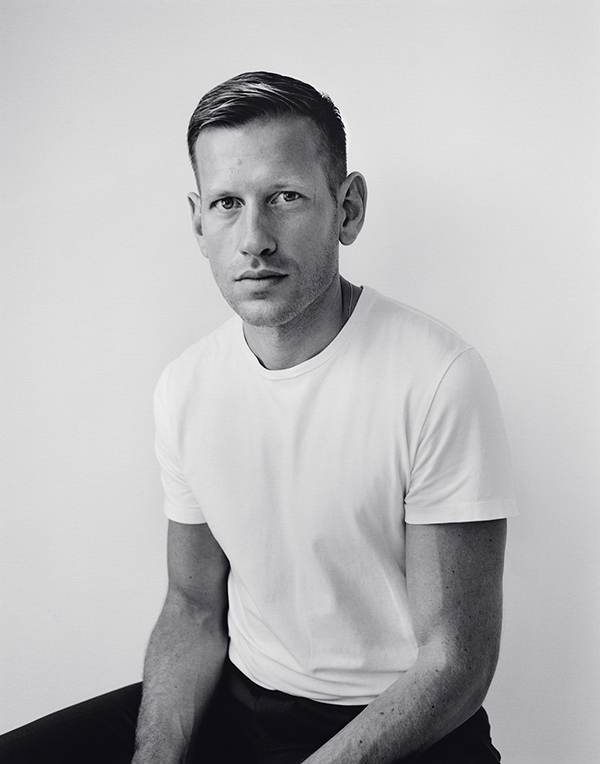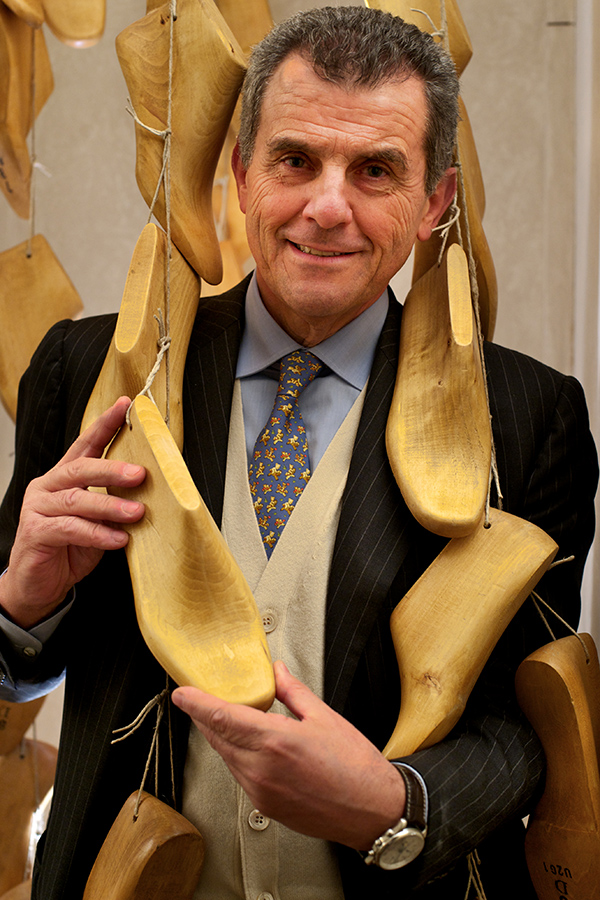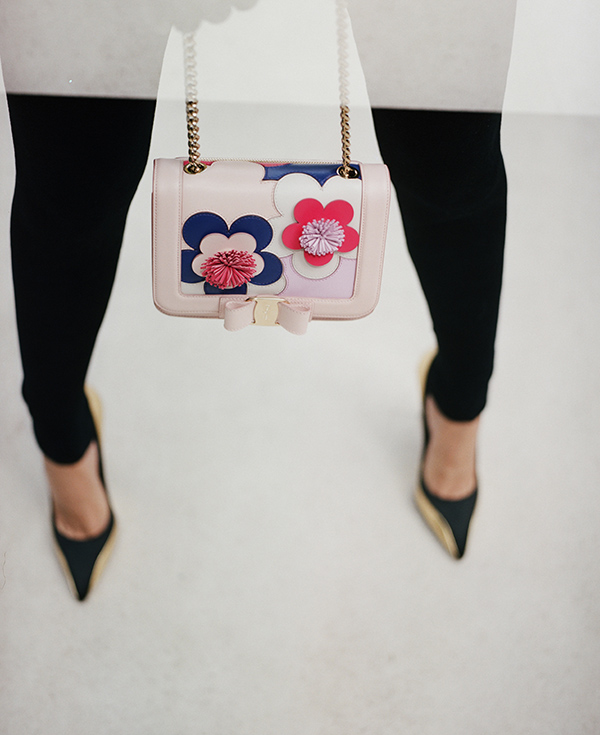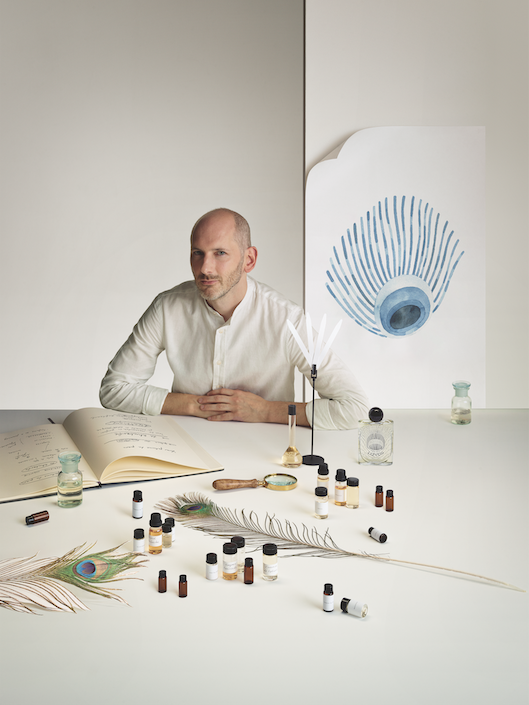
Salvatore ferragamo conjures images of a mature, opulent crowd with a finely materialised approach to living one -one that constitutes nothing more strenuous than total immersion in a prolonged state of recreation. But when we meet the Florence-based company’s leaders at the Four Seasons Hotel Hong Kong, we uncover a forward-looking business mindset with a healthy reverence for the past. They’re here to celebrate the reopening of the brand’s Canton Road flagship and to host its intriguingly titled High Tech Botanical party at the Asia Society, which has been transformed to match the palette of the brand’s pre-spring 2018 collection.
While Ferragamo may be at the forefront of luxury, it needs the right sort of leadership, says Eraldo Poletto – he worked for Brooks Brothers, Furla and Dunhill before coming on in mid-2016 as the group’s CEO. “The job of luxury is not to have expensive things or objects to fulfil desires, but to be on top and define what the job of a luxury company is today. We have to lead in that way – our job is to be ahead of the changes.”
On the morning we meet, by way of perfect symbiosis, the press is flush with the success of a certain thigh-high boot produced by the late, great designer Azzedine Alaïa. Poletto takes out his iPhone, scrolls down and displays the boot. It looks so quintessentially Alaïa – except it’s actually not, as Poletto delivers the kicker: “Azzedine approached us and asked if we’d design the boot that Ferruccio’s [Ferragamo, chairman of the group] father had designed in the 1920s.”

Newly minted Ferragamo creative director Paul Andrew chimes in: “For Alaïa’s haute couture show in Paris, we produced a leopard boot that stretches thigh-high to a stocking. It was created in 1925, yet it looks as though it were made yesterday. I, as a designer, have always looked up to Alaïa, so the idea that he came to us with was amazing.” It’s a sign of how prescient the founder’s design mindset was, too. “If you think about what Salvatore was doing in the’20s,’30s and’40s, he was so advanced in everything for his time,” says Andrew. “So my mandate to myself has been to put that hat on my head and think about what that means now. The pre-spring and spring collections take influence from an overarching theme of oral things – in raffa, macramé – so we’ve modernised that.”

That’s one thigh-high wow right there. And it’s a reminder that behind the easy, to-the-palazzo Ferragamo glamour lies the cut and thrust of a founder as visionary and groundbreaking as the neo-realists of Italian cinema that followed him. He was also a man who mixed in the highest circles, design-wise. “My father was very good friends with Christian Dior,” recalls Ferruccio Ferragamo, chairman of the group and the eldest son of Salvatore. “There was the Neiman Marcus award in 1947 – they went by boat to receive the award in the States and became good friends. He was also, later, good friends with Emilio Pucci.”
Ferruccio cherishes vivid memories of his grandfather’s meetings with his accountant. “For several months, he brought me to the office and, while he was talking to his accountant, he used his hands, working with wood to make materials for creativity. When he couldn’t find proper leather, he would use fishing rope or use a transparent look – the colour of skin, like nude. He’d often use very cheap materials – even candy paper. So he was continuously creating. The archive we have is proof of that, which makes us think – if he were alive, what would he be doing now?”
“Now” is a very different reality than the one Salvatore lived through – one in which technology is leading fashion, rather than aiding it. It’s also one in which so many luxury brands are playing catch-up, particularly in China. “The customer is so much smarter there now,” says Poletto. “They love that we have this history, because everyone is attracted to something authentic. But at the same time, they want us to be relevant. They will say, ‘You have a great history, a great story – but show me something good now.’ That is the judgement they make all the time.”

Poletto believes the switch isn’t just a millennial thing, but an entire change wrought by technology. “The customer has changed today,” he says. “Even people in their 30s, 40s or 50s – they can have a millennial mindset too because of this baby [he points to his iPhone]. So it’s not just an ageing thing when we talk about millennials; it’s also more of an attitude. The codes for the millennials are because of the contemporary world, more than ageing. And I think that has already changed the way we need to operate across the board.”
Given Ferragamo’s associations with a more mature market, how easily can it tilt its access towards trends across the market – in athleisure, for example? “Our eyes are open in that respect,” says Andrew. “Although you may not see it in stores right now, a lot of energy and attention on that sector of footwear is coming. And even the way we approach our more formal dress shoes is really about adding that level of comfort into the product, too.”
Which makes one wonder, as a designer, how much of Andrew’s influence goes into a shoe design and how much does he appropriate the prodigious inventory of the founder?

“Almost everything I do is connected to the archives somehow,” he admits. “But it would be a mistake just to replicate old pieces. There’s the heel, which we’re calling the flower heel, which has become a new icon for the house. It’s one he [Salvatore] created in 1939. But now it exists as a at, as a block heel, as a stiletto, as a kitten heel.”
Andrew pauses to appraise his lot. “Can you imagine as a fashion designer, having inherited that archive as an inspirational resource? It’s the most fantastic thing I could ever have dreamed of! You can never run out of inspiration. In Florence, there are more than 15,000 pairs of archival shoes.”
So the future, at least, is assured for the Ferragamo brand, whose founder created a century ahead at every step.
This feature originally appeared in the January 2018 print issue of #legend





